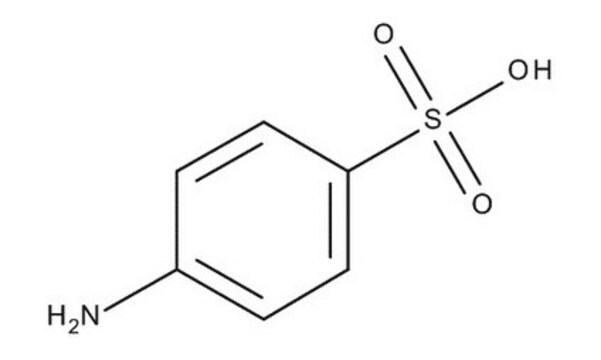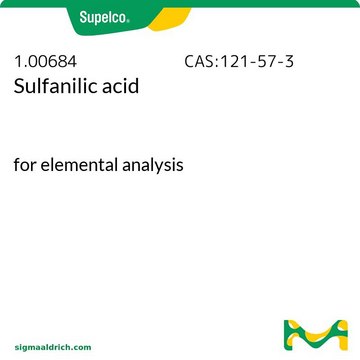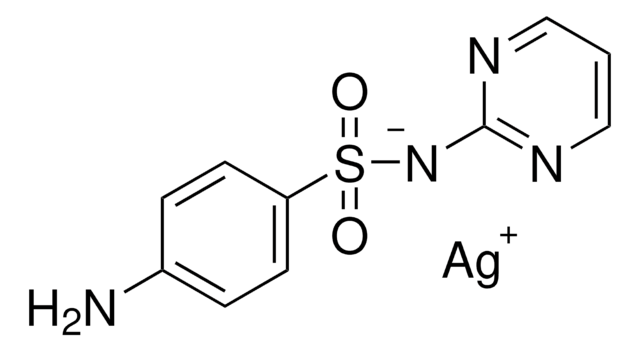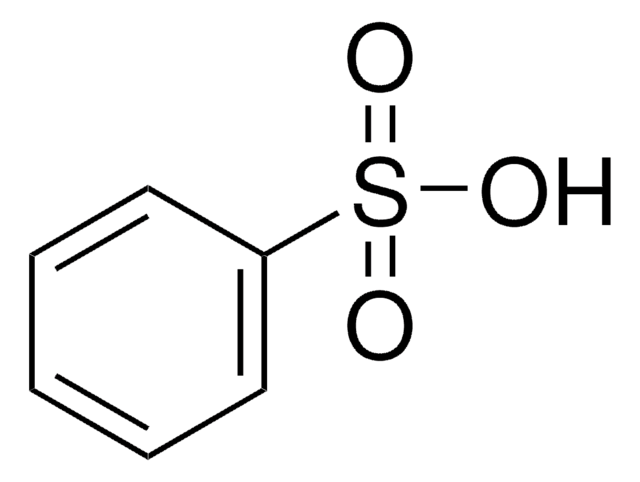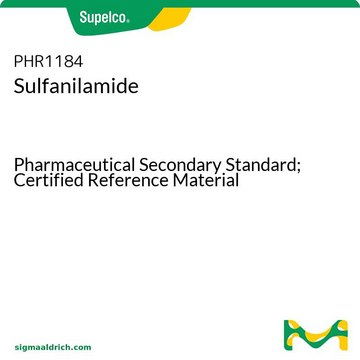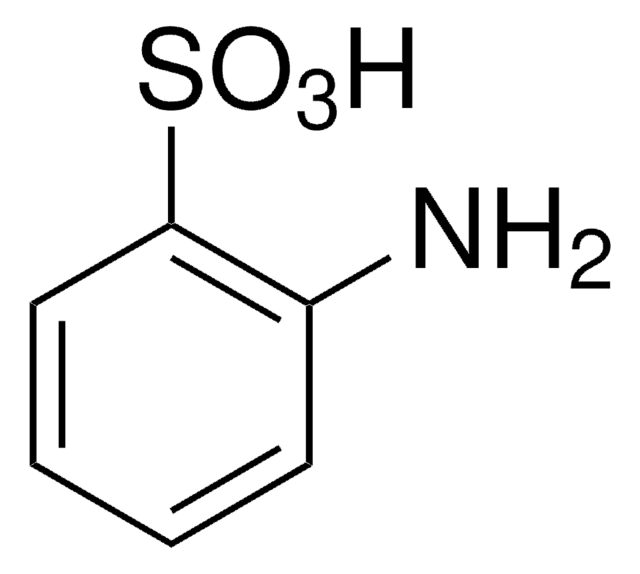1633506
USP
Sulfanilic acid
United States Pharmacopeia (USP) Reference Standard
Synonym(s):
4-Aminobenzenesulfonic acid, Aniline-4-sulfonic acid
About This Item
Recommended Products
grade
pharmaceutical primary standard
API family
mesalazine, sulfadimethoxine, sulfadiazine
manufacturer/tradename
USP
mp
>300 °C (lit.)
solubility
water: soluble 12.51 g/L at 20 °C
density
1.4862 g/cm3 at 20 °C (OECD Test Guideline 109)
application(s)
pharmaceutical (small molecule)
format
neat
SMILES string
Nc1ccc(cc1)S(O)(=O)=O
InChI
1S/C6H7NO3S/c7-5-1-3-6(4-2-5)11(8,9)10/h1-4H,7H2,(H,8,9,10)
InChI key
HVBSAKJJOYLTQU-UHFFFAOYSA-N
Looking for similar products? Visit Product Comparison Guide
General description
Application
- Silver Sulfadiazine
- Sulfamethoxazole
- Sulfamethoxazole and Trimethoprim Injection
Analysis Note
Other Notes
related product
Signal Word
Warning
Hazard Statements
Precautionary Statements
Hazard Classifications
Eye Irrit. 2 - Skin Irrit. 2 - Skin Sens. 1
Storage Class Code
13 - Non Combustible Solids
WGK
WGK 1
Flash Point(F)
Not applicable
Flash Point(C)
Not applicable
Choose from one of the most recent versions:
Certificates of Analysis (COA)
It looks like we've run into a problem, but you can still download Certificates of Analysis from our Documents section.
If you need assistance, please contact Customer Support.
Already Own This Product?
Find documentation for the products that you have recently purchased in the Document Library.
Customers Also Viewed
Our team of scientists has experience in all areas of research including Life Science, Material Science, Chemical Synthesis, Chromatography, Analytical and many others.
Contact Technical Service

